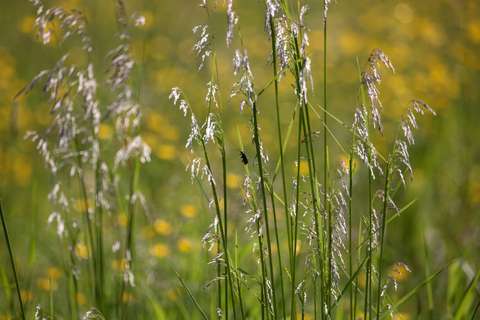Espoo invests in the management and surveying of valuable traditional landscapes

The meadows tell the story of Espoo’s long agricultural history. However, old agricultural environments are disappearing in Espoo, too. This year, the city is investing in the management of former pastures and meadows and surveys their endangered species.
Espoo’s traditional landscapes, or traditional biotopes, are small in area and are located in different parts of the city. Katrin Aia, Environmental Planner at Espoo Environmental Protection, says that all traditional biotope types and a significant proportion of their plant species are endangered.
“To remain open, traditional biotopes need to be grazed or managed by, for example, mowing. Without management, they gradually become overgrown and are no longer suitable as a habitat for plants that are used to the open terrain.”
The location of Espoo’s traditional biotopes can be viewed on the Espoo map service(external link, opens in a new window).
Former meadows and pastures are managed by mowing
This year, the management of traditional biotopes in Espoo can be invested in, as the city has received additional funding for it.
“A local contractor will carry out mowing and pest control at some of our sites. The rest of the sites will be managed by our own summer employees," says Aia.
Aia is delighted that this year almost all sites owned by the City of Espoo can be managed.
“Conservation requires sustained effort. The sites will need to be managed for many years before their ecological status improves and the population of threatened species strengthens.”
Future management actions are planned on the basis of species surveys
Before management actions can be targeted correctly, information on the current state of the sites is needed. Thus, part of the funding will be used to carry field work and surveys.
“During summer, a nature surveyor will visit each of our traditional biotope sites. The surveyor will list all the found plant species and make observations about the ecological state of the site,” Aia says.
The results will be compiled in a report and a follow-up plan for the management of the sites will be drawn up. According to Aia, the report will be very useful for Espoo Environmental Protection in the future.
“The report will give us a clear plan for the future on how best to promote biodiversity on the sites. Maybe we can get some of the sites back to pasture.”
Management is a collaborative effort
This year, Espoo Environmental Protection mainly only manage sites owned by the city. Some of the valuable traditional biotopes are also privately owned. Landowners can apply to the ELY Centre(external link, opens in a new window), for example, for support in maintaining and restoring these sites.
Residents will also be able to learn about traditional haymaking. On 9 August 2025, a community effort for the local traditional landscape will be organised in Laajalahti. The effort will focus on collecting hay and putting it in haystacks. Mowing and clearing mowing waste helps keep meadows open and nutrient-poor for the species that have adapted to live there.